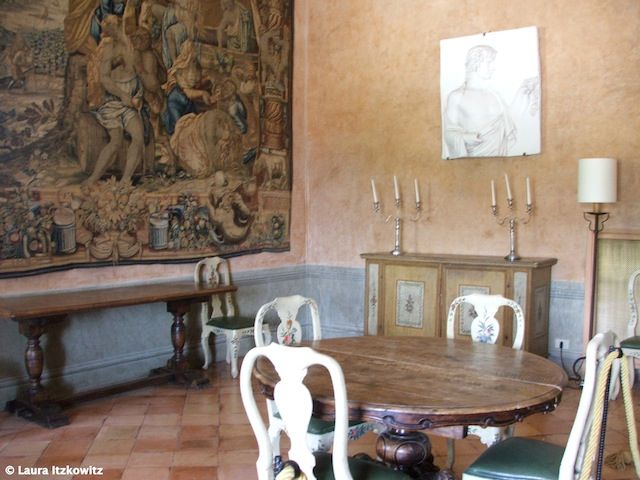Last Chance to Catch NYC's Holiday Notalgia Train
We met the voices of the NYC subway on our nostalgia ride this weekend!



The Villa Medici is the home of the Académie de France in Rome founded under Louis XIV and moved to its current location overlooking the city by Napoleon Bonaparte in 1803. Its original mission was to send French artists to Rome to copy the great sculptures and reliefs of Antiquity. Nicolas Poussin was to have been the first director, but he died before he could assume the position. His portrait still hangs in one of the suites of the villa.
During the nineteenth century the Académie was opened up to musicians, and in fact welcomed some of France’s greatest composers including Debussy and Berlioz. Even the great architect of the Paris Opera House, Charles Garnier, lived and worked at the Villa Medici. Today the Académie welcomes francophone artists of any nationality to live at the villa and create original works of art in any medium. Its name refers to the cardinal Ferdinando de’ Medici (1549-1609), who acquired the villa and commissioned the Florentine architect Bartolomeo Ammannati to transform it into a palace worthy of the Medici dynasty.
I had the opportunity to visit the Villa Medici as a guest of one of the former directors of art history and restoration. Marc Bayard told me about the history of the villa and the art it contains as he led me through the director’s apartments, the grand salon where they hold concerts and events, and even into the attic to see the very structure of the building, which is off-limits to the public. The Villa Medici provides a perfect example of the rich cultural exchange between the two great centers of artistic production that I have called home, Paris and Rome.
As I walked through the spacious terra-cotta tiled rooms of the Villa Medici, I kept thinking back to an art history course I took in college. Though it was entitled “The Age of Louis XIV,” we spent about half of the class discussing Italian artists in France and French artists in Italy. Sitting at the Villa Medici, I understood the influence that each had over the other. It is the mission of the Villa Medici to continue this tradition by funding artists and scholars, as well as hosting numerous cultural events.

The director’s dining room.

The Grand Salon, which hosts many concerts and lectures.

The Gypsothà ¨que, containing plaster copies of Ancient Roman sculptures and reliefs.

The Caffeteria of the Villa Medici.

View of Rome from the Caffeteria of the Villa Medici.
From July 16 to 27, the Villa Medici will reopen its gardens to the public for a series of open-air cinema honoring Marcello Mastroianni and his daughter Chiara Mastroianni. Check their website for the complete schedule of films.
Get in touch with the author @lauraitzkowitz
Subscribe to our newsletter